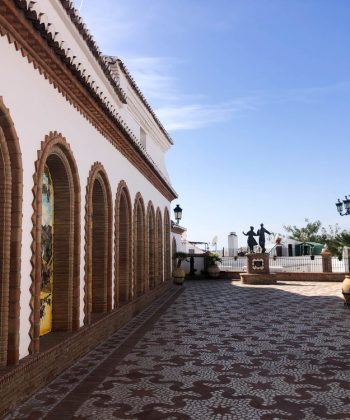
It was in the 2nd century BC when the Romans settled in this place they call “Compita-Orum”, a crossroads. They introduced the cultivation of vines, olives, almonds and figs. Six centuries later, the Muslims arrived and, with them, the silk industry, the irrigation system by ditch and the construction of the “azaqui” or terraces for cultivation. It was the Moors who dominated until their surrender to the Catholic Monarchs in 1487.
In 1505 the Parish of Cómpeta was created and at the end of this century its population grew, arriving from Granada, Córdoba and Seville. However, on October 9, 1680 an earthquake destroyed many of its houses and the church tower. Even so, Between 1750 and 1884 Cómpeta experienced its economic boom, as arable land triples, vine cultivation becomes more prevalent and the population increases fivefold.
Between 1884 and 1887, Cómpeta fell into disgrace due to an earthquake, a cholera epidemic and the appearance of phylloxera, which devastated the vineyards and caused many inhabitants to emigrate to the north of Spain and South America. It was in the 20th century that new vineyards were planted, agricultural transformation took place and tourism appeared, reviving the economy once again.
Its location, just 53 kilometres from the capital of Malaga, just 20 minutes from the sea and surrounded by mountains, the good climate (although it gets quite cool in winter) and how picturesque and pleasant it is also favoured that At the end of the 20th century many English, Danish, Dutch and German people moved to Cómpeta and provided a major economic boost by rehabilitating abandoned houses and creating new businesses.




